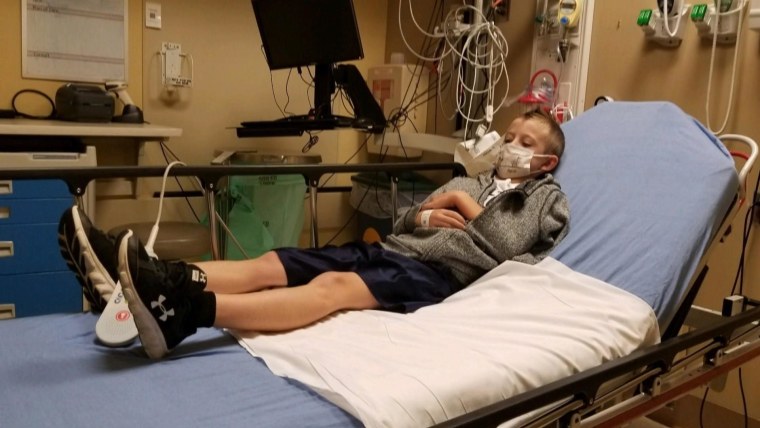The Centers for Disease Control and Prevention on Tuesday urged doctors to learn to recognize early signs of a polio-like condition in children, called acute flaccid myelitis (AFM), and move quickly to collect lab samples for investigators.
AFM is a rare condition that affects the nervous system and causes limb weakness. Some children have become severely disabled with paralysis, and some have required the help of a ventilator to breathe.
The cause of AFM is unknown, but the CDC suspects a virus is the likely culprit. But part of what makes that virus difficult to pin down is that symptoms of the condition often don't show up until after kids start to recover from the infection. And the viral infection itself may only cause mild symptoms, like a head cold.
That's why the CDC is urging doctors to collect lab samples as soon as possible when they suspect cases of AFM.
"When specimens are collected as soon as possible after symptom onset, we have a better chance of understanding the causes of AFM and developing a diagnostic test," Dr. Anne Schuchat, the CDC's principal deputy director, said in a call with reporters.
The CDC pointed to several clues that doctors can look out for: Cases of AFM tend to show up in late summer and early fall, between August and October. The average patient is around age five. And most patients have respiratory symptoms or fever consistent with a virus less than a week before developing limb weakness.
If doctors suspect AFM, the CDC says they should immediately collect lab specimens, including cerebrospinal fluid, and alert the health department if an MRI shows a spinal lesion.
Early identification can also help with recovery.
"Early and aggressive physical therapy and rehabilitation hold good promise to help kids strengthen the function that they have after AFM and regain as much strength and function as possible," Dr. Tom Clark, a pediatrician and leader of the CDC's team investigating AFM, said.
Virus season is coming
The CDC strongly suspects that two types of enterovirus, D68 and A71, play roles in AFM.
"The season for enteroviruses is coming, and if your child develops arm weakness or leg weakness, please seek medical care right away," Schuchat said.
2018 was the worst year on record for the condition, with 233 cases reported in 41. The vast majority of cases were in young children, and 98 percent had to be hospitalized. More than half required a stay in the intensive care unit.
So far in 2019, 11 cases of AFM in eight states have been confirmed. Doctors do not anticipate this will be a particularly severe year for the illness because it tends to follow an every-other-year pattern.
In 2014, 120 people were diagnosed. In 2015, that number fell to 22, then rose again to 149 cases in 2016. Cases dropped to 35 in 2017 before topping out at 233 in 2018.
FOLLOW NBC HEALTH ON TWITTER & FACEBOOK


